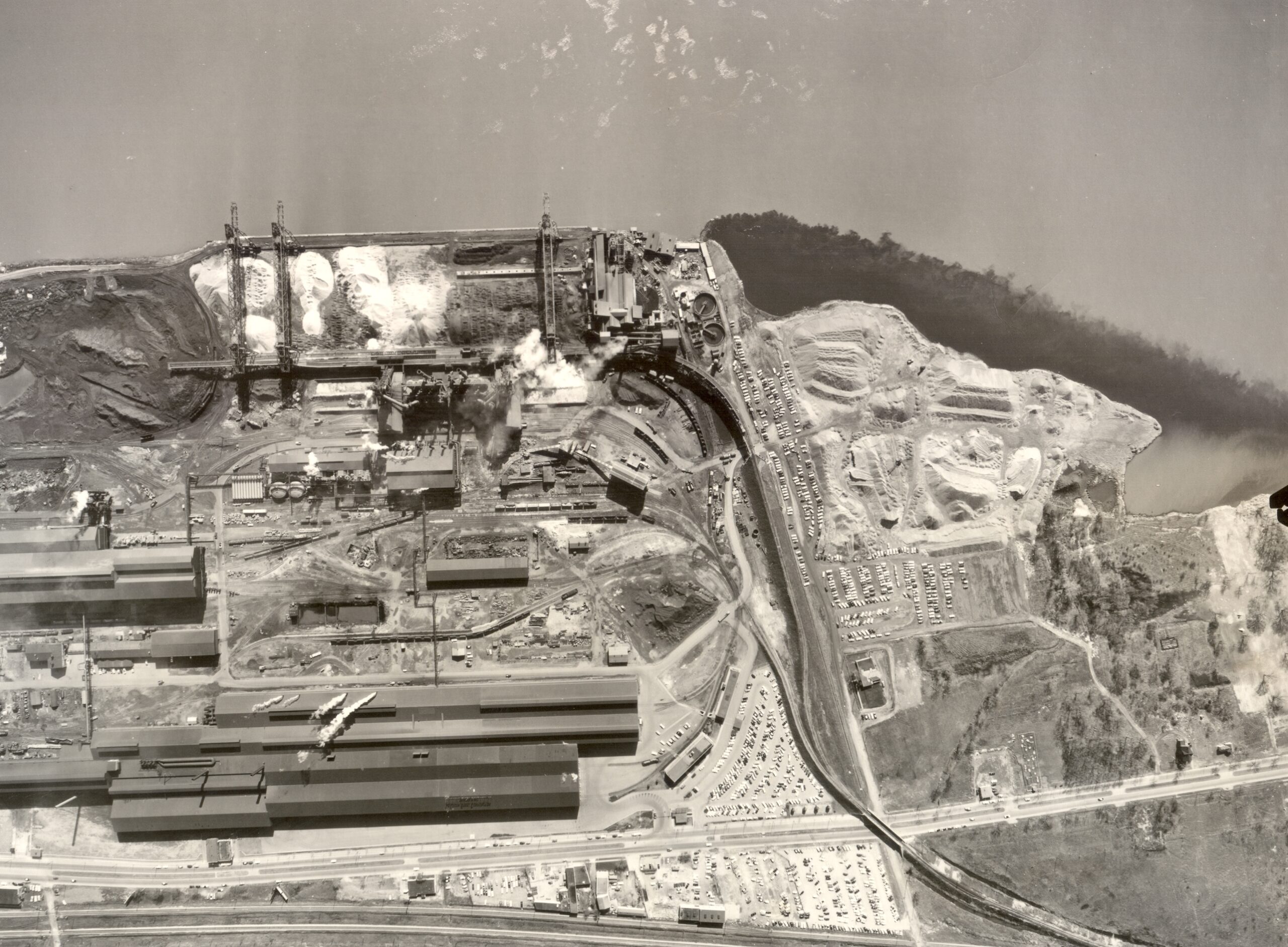
Great Lakes Moment is a monthly column written by Great Lakes Now Contributor John Hartig. Publishing the author’s views and assertions does not represent endorsement by Great Lakes Now or Detroit Public Television.
Today, the Detroit River is much cleaner, and sentinel wildlife species have returned. It is good to look back at the 1960s pollution of the river, notably oil pollution, and recognize how far we have come. However, we still have much work to do, including developing a stewardship ethic.
During the 1940s, Detroit River oil pollution worsened when metropolitan Detroit became the “arsenal of democracy,” and no environmental laws existed. At that time, the nation’s sole purpose was to win World War II, and Detroit’s role was to help supply implements of war to achieve the Allied victory. According to the U.S. Department of Health, Education, and Welfare, massive amounts of oil and petroleum products totaling 5.9 million gallons per year were released into the Detroit River from 1946 to 1948.
One of the consequences of this oil pollution was waterfowl mortality. Oil can mat the feathers of waterfowl, reducing feather-insulating properties, which can result in death due to exposure to cold water. Oil on the feathers can also result in buoyancy loss, leading to drowning. In 1948, 11,000 waterfowl died from this oil pollution.
By the 1960s, water pollution of the Detroit River was rampant. Industry was king and provided good-paying jobs. As a result, citizens became indifferent to water pollution, seeing it as just part of the cost of doing business. Even though oil discharges declined substantially in the 1960s, they remained a significant problem.
In 1961, the U.S. Department of Health, Education, and Welfare measured 158,000 gallons of oil discharged into the Detroit River annually. This volume was still substantial because one gallon of oil can pollute a million gallons of water. Oil pollution impacts continued to occur, with the Michigan Department of Natural Resources reporting 12,000 and 5,700 waterfowl deaths due to oil pollution during 1960 and 1967, respectively.
It was during the 1960s that the Federal Water Pollution Control Administration (the predecessor of the U.S. Environmental Protection Agency) characterized the Detroit River as one of the most polluted rivers in the United States. During this decade, industries discharged oil and other petroleum products, heavy metals, and organic compounds like polychlorinated biphenyls (PCBs) like those immediately preceding it.
They were killing organisms living on the river bottom, causing cancer in bottom-feeding fish, and making game fish unsafe to eat. Indeed, the lower end of the Rouge River – a tributary of the Detroit River – was so polluted with oil and other petroleum products that it caught on fire on October 9, 1969.
On that infamous day, a welder’s torch accidentally dropped and ignited oil and oil-soaked wooden debris floating on the lower river. Flames climbed 50 feet into the air, and the U.S. Coast Guard had to halt traffic on the river. It would take ten fire engines and the Detroit fire boat named the John Kendall to contain the fire and let it burn out.

Michigan Conservation Officer with oil-soaked ducks from the Detroit River that had died from oil pollution, 1948 (credit: Bentley Historical Collection, Jack Van Covering Papers).

“It seemed that the Detroit River always had an oil sheen on it. As a result, the river had its own unique oil smell during those years – sort of like a gas station,” said Gorris. “When fishing offshore, it was more of a faint smell, but if we were fishing from shore or along it, the rocks would be coated in oil and the smell would be stronger – a more pungent, oily-like smell of hydrocarbons.”
Gorris and his family lived a few miles inland from the river, requiring them to trailer their boat to go fishing. Because of the substantial oil pollution, oil would accumulate on their boat hull, requiring a thorough cleaning after each fishing trip. Gorris said: “Even our fishing lines and reels would get coated with oil and had to be periodically cleaned.”
During high school, Gorris rowed on the river. For him, it was another way to be out on the water and explore the river. He even swam off the east side of Fighting Island in Canada, where the water was cleaner. Gorris noted: “When we returned from rowing practice or a regatta to the Ecorse Boat Club, we would have to clean the oil off the hull and wipe off the oil on our oars.”
Public outcry over pollution in the 1960s led to an environmental awakening: the first Earth Day in 1970, the establishment of the 1970 Canada Water Act, the 1970 U.S. National Environmental Policy Act, the 1972 U.S. Clean Water Act, the 1972 Canada-U.S. Great Lakes Water Quality Agreement, the 1973 U.S. Endangered Species Act, and many complementary state and provincial environmental laws.
River monitoring has since documented substantial improvements over the last more than 50 years, including reductions in critical pollutant loadings, upgraded municipal wastewater treatment from primary to secondary treatment with phosphorus removal, reduced contaminant burdens in levels in fish and wildlife, remediation of some contaminated sediment hot spots, and enhancement or rehabilitation of targeted habitats. This improvement in the river’s health has, in turn, resulted in an ecological revival, including the return of bald eagles, peregrine falcons, osprey, lake sturgeon, lake whitefish, walleye, beaver, and river otter.
Oil spill data collected by the U.S. Coast Guard and the U.S. Environmental Protection Agency show a substantial reduction in the volume of oil spilled; however, there are still years when substantial oil spills occur. For example, a more than 100,000-gallon oil spill occurred in the Rouge River in 2002, resulting in a $7.5 million cleanup on the lower Rouge River and both the Canadian and American sides of the Detroit River. Ten ducks and geese died as a result of this oil spill. While this number may seem insignificant compared to years past, it reminds us that oil pollution continues to threaten waterfowl.
Although there is no questioning the improvement in the Detroit River, much remains to be done to reach long-term ecosystem goals. Key challenges include preventing pollution, remediating contaminated river sediments and brownfields that are stymying further improvement in ecosystem health, addressing stormwater and sewage overflows, mitigating and adapting to climate change, rehabilitating and conserving habitats, and preventing the introduction of invasive species.
We must remember this 1960s water pollution and recognize that we share our ecosystem with fish, birds, and other life. Therefore, we must not forget that what we do to our ecosystem, we do to ourselves. We must continue reconnecting people with the Detroit River through greenways and water trails and provide citizen science and land and water protection opportunities that foster conservation and environmental education. Such outdoor recreational and educational experiences help galvanize an appreciation and love for the outdoors. That, in turn, will help develop a strong sense of place that can inspire a stewardship ethic.
John Hartig is a board member at the Detroit Riverfront Conservancy. He serves as a Visiting Scholar at the University of Windsor’s Great Lakes Institute for Environmental Research and has written numerous books and publications on the environment and the Great Lakes. Hartig also helped create the Detroit River International Wildlife Refuge, where he worked for 14 years as the refuge manager.
Catch more news at Great Lakes Now:
Great Lakes Moment: Ohio provides example for funding Detroit and Rouge rivers’ sediment cleanup
Great Lakes Moment: Creating a green oasis in southwest Detroit
Featured image: The former McLouth Steel Corporation discharging oil into the Detroit River in Trenton, Michigan, 1960 (credit: City of Trenton).
2 Comments
-
I am a new resident. Thanks for sharing
-
Excellent synopsis of petroleum dumping in the Detroit River. Congratulations, John, for another top flight article.




